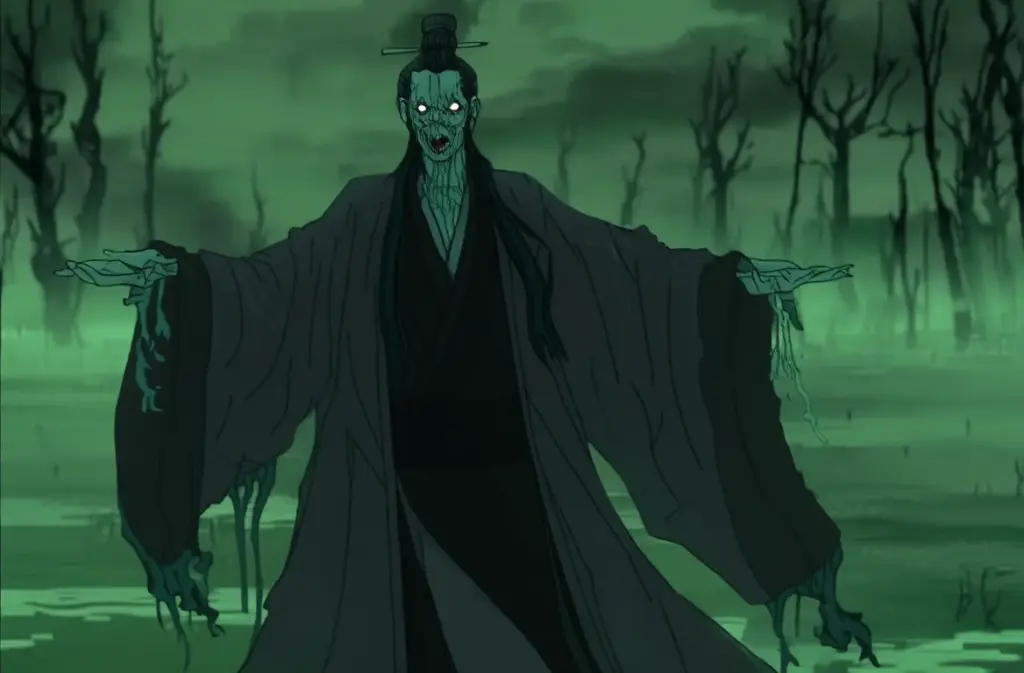The Poisoned Ghost, known in Chinese as Zhongdu Gui (中毒鬼), is a vengeful spirit rooted in Chinese folk religion and spiritual beliefs. Also referred to as the Toxic Spirit or Poison Death Phantom, this entity emerges from victims who died due to poisoning, often unjustly betrayed or murdered by someone they trusted.

In Chinese demonology, the Zhongdu Gui embodies both physical suffering and spiritual unrest. Unlike other ghosts tied to unresolved issues, the Poisoned Ghost specifically represents the agony of death through betrayal and toxic harm, making it one of the most feared entities in Chinese spirit possession tales.
Information
- Name: Zhòngdú Guǐ
- Alternative Names: Toxic Spirit, Poison Death Phantom
- Gender: Typically female, though male spirits exist
- Age: Over 2,230 years, from the Han dynasty (206 BC – 220 AD)
- Abilities: Spreading illness, causing hallucinations, poisoning food and water sources
- Interests: Seeking vengeance on those who poisoned them, haunting ancestral homes
- Cultural Background: Originated in Han Dynasty folklore; appears in Ming and Qing dynasty ghost stories
Origin
The legend of the Poisoned Ghost traces back to ancient China, particularly during the Han Dynasty, where records describe women and men poisoned by jealous spouses, rival concubines, or political enemies. One well-documented tale involves a Ming-era noblewoman named Lady Cui, who was poisoned by her husband’s jealous second wife. Upon her death, her body turned black, and she reportedly whispered curses before dying.
Because poison was a common weapon in imperial courts and aristocratic households, many believed that these victims’ souls could not pass into the afterlife peacefully. Instead, their spirits became trapped between worlds, fueled by toxic resentment and physical pain. Over time, these tragic deaths gave rise to the Zhongdu Gui myth, a spectral reminder of injustice and betrayal.
Characteristics
The Poisoned Ghost typically appears as a pale, emaciated figure with darkened lips and hands, signs of internal poisoning. Some accounts describe black veins crawling across the skin, symbolizing the lingering effects of the toxin. These spirits are often seen holding a cup or vial, representing the instrument of their death.
Their presence is marked by a sickly sweet smell, and they can cause unexplained illnesses in the living. In some stories, they appear in dreams, whispering warnings or offering poisoned food to their intended victims. The Zhongdu Gui’s emotional state is defined by bitterness, sorrow, and a relentless desire for justice or retribution.
Cultural Significance
The Poisoned Ghost plays a significant role in Chinese moral storytelling, serving as a cautionary figure against deceit, jealousy, and betrayal. Her appearance in ghost operas, folk novels, and modern horror films reinforces the idea that evil deeds do not go unpunished, even beyond death.
In Taoist rituals, exorcists perform specific rites to appease such spirits, especially when unexplained sickness plagues a household. Modern adaptations, such as the film Curse of the Poisoned Bride (2019), continue to explore themes of toxic love and supernatural justice, proving that the Zhongdu Gui remains a powerful symbol in Chinese spirituality and horror culture.
